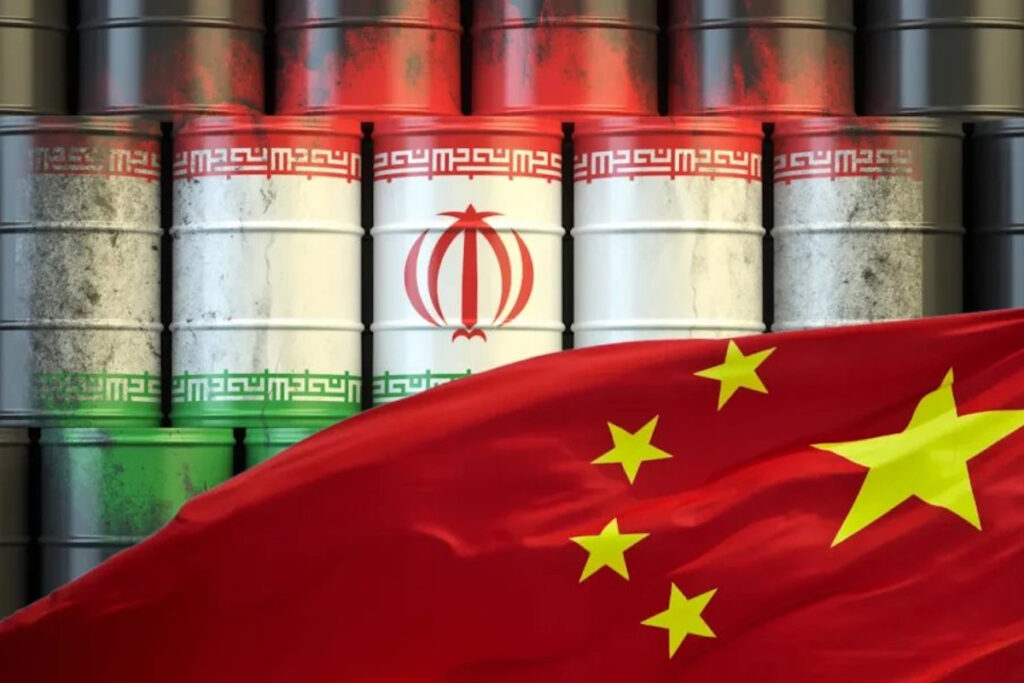What would happen if Iranian oil – a heavily sanctioned but vital supply for China – suddenly stopped flowing?
US pressure and the possible “snapback” of UN sanctions could choke off Iran’s clandestine crude exports, testing Beijing’s energy security, raising costs for its industry and dealing a financial blow to Tehran in a high-stakes geopolitical showdown.
Iran’s oil exports have rebounded sharply in recent years despite US sanctions over its nuclear program. After plunging to a 40-year low of about 0.4 million barrels per day (mbpd) in 2020, exports recovered to roughly 1.4 mbpd in 2023 and peaked near 1.5 mbpd in 2024.
However, this has since seen a reduction in 2025 following regional crises, with sales decreasing again. Despite this volatility, China’s dominance as a buyer remains absolute, purchasing roughly 90% of Iran’s total exports.
To entice buyers, Iran sells its oil at steep discounts on market rates. In late 2023, its flagship crude traded at about $13 per barrel below the Brent benchmark, according to Reuters, a staggering 15% discount that saved Chinese buyers an estimated $10 billion in 2023 on their total sanctioned oil imports.
This trade is facilitated by a “dark fleet” of tankers that disguise their origin, often relabeling Iranian crude as Malaysian. As a result, while China’s official customs data shows no imports from Iran, its imports from “Malaysia” have surged far beyond that country’s actual production capacity, revealing the scale of this clandestine trade.
Table 1: Iran’s crude oil exports and China’s share (2020–2025)
For China, the world’s largest crude importer, Iranian oil has become a strategic asset. It provides a cheap and reliable supply for its independent “teapot” refineries in Shandong province, which thrive on discounted crude and account for roughly a quarter of China’s refining capacity.
If disguised shipments are counted, Iran is now China’s third-largest source of crude imports, providing a significant share of its total supply and creating a critical vulnerability.
Table 2: China’s crude oil imports by source country (2023–2025)
Snapback shock scenario
A sudden halt to this trade – whether from tighter US enforcement or a UN “snapback” of sanctions – would trigger an immediate supply shock. The removal of Iran’s current export volume, estimated at ~1.3 mbpd in 2025, would create a significant hole in China’s import slate.
The macroeconomic consequences would be swift and painful. The most direct impact would be the loss of the steep discount. Based on the reduced 2025 export levels, an average discount of $10-$14 per barrel translates to a direct increase of $13 to $18 million per day in China’s import costs. Annually, this amounts to a substantial $4.7 to $6.6 billion hit to its energy bill. This isn’t just a rounding error; it’s a direct tax on the Chinese economy.
This financial blow would create a powerful inflationary shock. Higher energy and feedstock costs would ripple through the economy, squeezing margins for petrochemical producers, plastics manufacturers and heavy industry.
This would come at a time when Beijing is already struggling to combat deflationary pressures and revive sluggish post-pandemic growth. A spike in energy costs would act as a direct tax on both industrial production and consumer spending, potentially shaving 0.3% to 0.5% off China’s annual GDP growth target in the first year alone.
For the independent “teapot” refineries built around this cheap crude, the shock could be existential, risking closures and regional fuel supply disruptions.
Limited options
China retains certain tools to soften the blow:
Tap Other Exporters: Increase imports from OPEC+ producers with spare capacity, such as Saudi Arabia and Iraq, or redirect more Russian supply.
Use Strategic Reserves: Beijing’s stockpile of over 900 million barrels provides months of import cover.
Diversify Energy: Accelerate the transition to renewables, natural gas and electric vehicles to curb oil dependence.
For Tehran, losing the Chinese market would be devastating. China accounts for nearly all its oil exports. Without this market, Iran would face a fiscal crisis, currency pressure and deeper reliance on illicit networks.
The regime could be forced into steeper discounts to smugglers or desperate barter trades, further eroding state revenues at a time of economic decline. Strategically, Iran would lose influence, as its partnership with Beijing is built primarily on oil.
Weaponized interdependence
A full cutoff of Tehran’s oil flows would recalibrate the US-China-Iran triangle. For Beijing, it would underline the reach of US sanctions power, but also accelerate efforts to de-dollarize and diversify. For Tehran, it would mean a crippling loss of its last major customer.
Yet the implications go beyond economics. A snapback would place China in direct confrontation with Washington’s sanctions regime, exposing Beijing’s limited room to maneuver against US financial dominance. The Trump administration’s recent imposition of 50% tariffs on Indian goods for purchasing Russia’s sanctioned oil is a shot across Beijing’s bow on Iran.
It could also test China’s willingness to shield Iran diplomatically, whether by lobbying within the UN Security Council or seeking to dilute enforcement through alternative institutions.
Such maneuvers would deepen the strategic rift between Washington and Beijing, while leaving Tehran even more isolated if China ultimately prioritizes stability in its broader US relations.
The result would be that China faces higher input costs, while Iran bears the brunt to its most important export. In today’s geopolitics of energy, lifelines can be fragile and quickly weaponized.
A senior economic analyst and deputy CEO of an oil & gas company based in Tehran, Amirreza Etasi (Amir.etasi@gmail.com) has worked for more than a decade at the intersection of public finance, energy and development policy, both in executive roles and as a contributor to major media outlets in Iran and abroad.

